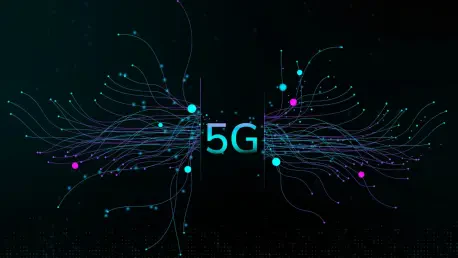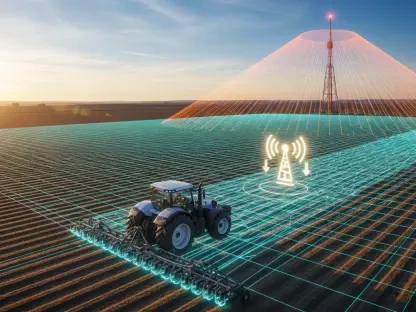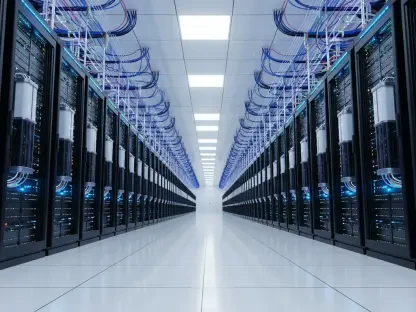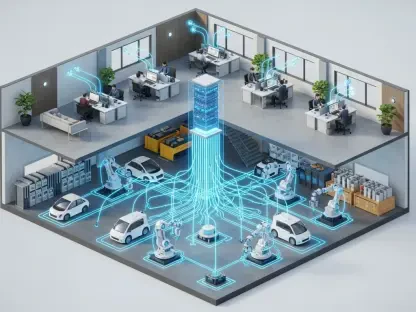The Current State of Smart Grids and the Need for Transformation
Imagine a world where power outages are predicted and prevented before they even occur, yet today’s smart grids often struggle to keep pace with escalating cyber threats and surging energy demands. As critical infrastructure for modern energy distribution, smart grids integrate digital technology to manage electricity flow, optimize resources, and enhance reliability. However, many systems face persistent challenges in security vulnerabilities, operational inefficiencies, and limited real-time monitoring capabilities, exposing gaps that could disrupt essential services.
These shortcomings are compounded by the increasing complexity of energy networks, with distributed energy resources and electric vehicle integration adding strain. The urgency to address these issues grows as cyber threats evolve, demanding robust solutions to safeguard data and infrastructure. Advanced technologies are no longer optional but essential to meet rising consumer expectations and ensure grid stability in an era of rapid urbanization and climate challenges.
Key industry players, including major utilities, telecom providers, and technology innovators, are at the forefront of this transformation. Their collaboration signals a shift toward integrating cutting-edge tools to modernize grids. Among these, quantum technologies and 5G-Advanced (5G-A) emerge as game-changers, offering unprecedented potential to enhance security, awareness, and efficiency in ways previously unimaginable.
The Synergy of Quantum Technologies and 5G-Advanced
Key Trends Driving Integration
The convergence of quantum technologies and 5G-A is reshaping the landscape of smart grid capabilities with innovative approaches to longstanding problems. Quantum-safe security stands out as a critical trend, providing defenses against future quantum computing threats that could decrypt existing encryption systems. This is vital for protecting sensitive grid communications from sophisticated attacks.
Parallel to this, quantum sensing is gaining traction for its ability to deliver high-fidelity, real-time monitoring of grid conditions. These sensors, leveraging quantum principles, detect minute changes in electric and magnetic fields, enabling faster fault identification. Meanwhile, early applications of hybrid quantum computing are being explored to optimize complex grid operations, solving problems that classical systems struggle with.
Complementing these advancements, 5G-A offers low-latency, deterministic connectivity crucial for quantum-driven applications. Its network slicing and priority features ensure seamless data transfer from sensors to control centers. Growing collaboration among utilities, telecom industries, and standards bodies like NIST and GSMA further accelerates this integration, setting the stage for interoperable and secure grid ecosystems.
Market Insights and Growth Projections
Adoption of 5G-A and quantum technologies in the energy sector is currently in its early stages but shows promising momentum. Private 5G networks are increasingly deployed by utilities for dedicated, secure communications, with projections indicating significant expansion over the next few years. Quantum cryptography solutions, particularly for high-value links, are also expected to see notable uptake by 2030.
Investment in quantum sensing and computing for grid applications is on the rise, driven by the need for enhanced monitoring and optimization. Industry forecasts suggest that these technologies could reduce grid downtime by a substantial margin while cutting operational costs through predictive maintenance and efficient resource allocation. The financial commitment from both public and private sectors underscores confidence in these tools.
The broader impact on grid reliability is anticipated to be profound, with metrics like outage duration and frequency expected to improve markedly. As pilot projects yield results, the data will likely encourage wider implementation, positioning early adopters as leaders in a more resilient energy market. These projections highlight the transformative potential already taking shape.
Challenges in Adopting Quantum and 5G-A for Smart Grids
The journey toward integrating quantum technologies and 5G-A into smart grids is fraught with hurdles that demand careful navigation. Technological limitations persist, as quantum computing and sensing remain in early developmental phases, lacking the maturity for widespread deployment. This creates uncertainty about their reliability under diverse grid conditions.
Cost and scalability further complicate adoption, with solutions like Quantum Key Distribution (QKD) requiring significant investment for limited applications. Integrating these advanced systems with aging grid infrastructure poses additional complexities, as compatibility issues with 5G-A networks can disrupt existing operations. Such challenges necessitate substantial upfront planning and resources.
Moreover, cybersecurity risks loom large during the transition to quantum-safe systems, as hybrid environments may expose vulnerabilities. To mitigate these obstacles, a phased approach involving pilot testing and the development of robust vendor ecosystems is essential. Strategic partnerships and incremental implementation can help balance innovation with stability, ensuring smoother integration over time.
Regulatory and Security Frameworks Shaping the Future
Navigating the regulatory landscape is pivotal for the successful deployment of quantum and 5G-A technologies in smart grids. Standards like NIST’s Post-Quantum Cryptography (PQC) frameworks, established in recent years, provide a foundation for transitioning to quantum-resistant encryption. These guidelines are crucial for utilities aiming to secure their systems against emerging threats.
Telecom standards from organizations such as GSMA, ETSI, and ITU-T play an equally important role in ensuring interoperability across networks. Their recommendations facilitate the integration of private 5G networks and MVNO models, aligning communication protocols with grid security needs. This harmonization is vital for seamless operation and data exchange.
Crypto-agility remains a cornerstone of future-proofing grid systems, allowing rapid adaptation to evolving cryptographic requirements. Compliance with these dynamic standards not only enhances security but also influences technology adoption rates. Regulatory changes continue to shape practices, pushing utilities to prioritize robust frameworks that support long-term resilience and trust.
The Future of Smart Grids with Quantum and 5G-A Innovations
Looking ahead, advancements in 5G-A through upcoming 3GPP Releases 18 and 19 promise to elevate energy efficiency and integrate artificial intelligence into grid management. These enhancements will optimize traffic prioritization and reduce power consumption, aligning with sustainability objectives. Such developments are poised to redefine operational benchmarks for utilities.
Quantum sensing holds potential to transform fault detection and grid reliability within the next few years, offering precise data for proactive maintenance. Over a longer horizon, quantum computing could enable real-time optimization of grid and market dynamics, addressing challenges like peak demand and resource allocation with unmatched precision. These prospects signal a leap forward in capability.
Global sustainability goals and economic conditions will undoubtedly influence adoption timelines, with incentives likely to accelerate investment in green and resilient technologies. Opportunities abound for utilities to lead through strategic partnerships, positioning themselves as innovators in a competitive landscape. This forward momentum underscores the importance of readiness and adaptability in shaping tomorrow’s energy infrastructure.
Conclusion and Strategic Recommendations
Reflecting on the insights gathered, it becomes evident that quantum technologies and 5G-A address critical smart grid needs in security, situational awareness, and operational efficiency. Their combined impact offers a robust solution to vulnerabilities that have long plagued energy distribution networks, paving the way for a more secure and responsive system.
As a next step, utilities should prioritize immediate adoption of Post-Quantum Cryptography to safeguard infrastructure against looming threats. Targeted trials for quantum sensing and hybrid optimization solutions are recommended to build practical expertise over the coming years. A clear roadmap focusing on phased enhancements from now through 2028 will ensure steady progress.
Collaboration between utilities, telecom providers, and regulators emerges as a vital strategy to mitigate risks and foster innovation. By investing in partnerships and aligning with evolving standards, stakeholders can unlock the full potential of these technologies. This collective effort promises not only to enhance grid reliability but also to position the energy sector as a leader in technological advancement for decades to come.









